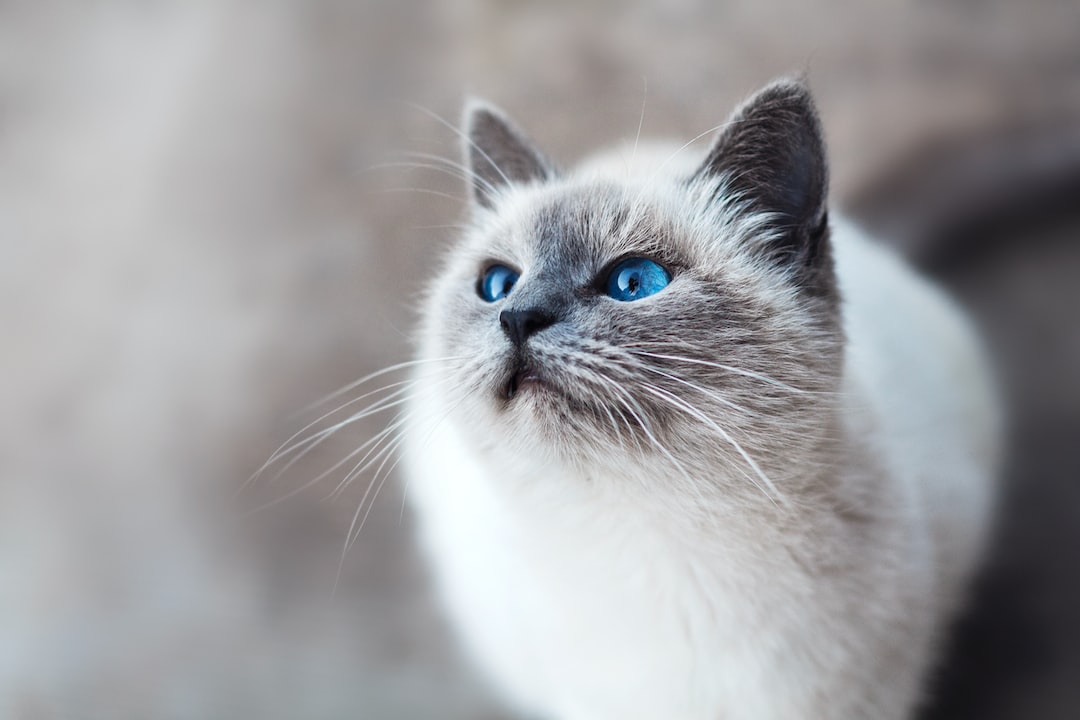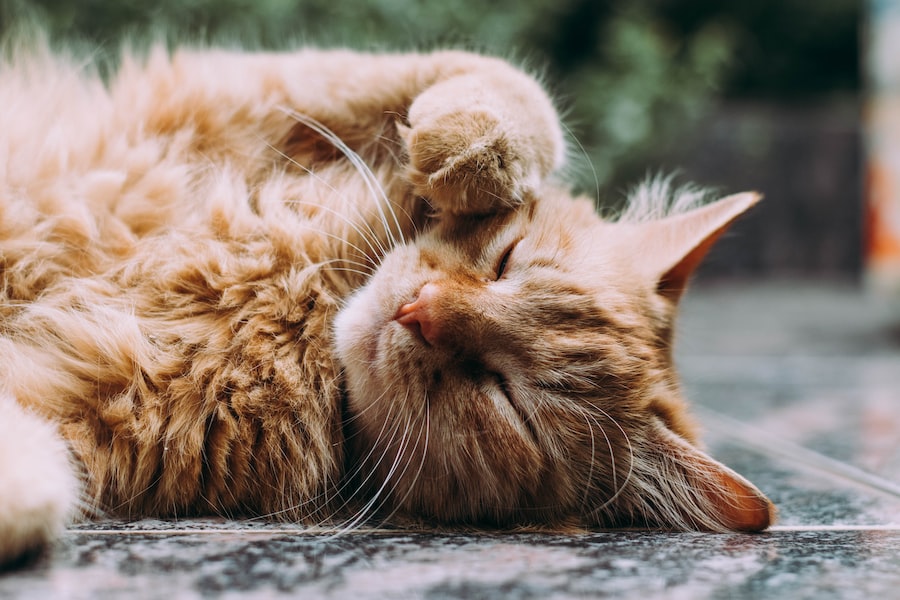Keeping Your Houseplants Safe: Tips for Keeping Your Curious Cat Away

Houseplants have become increasingly popular in recent years, with many people enjoying the benefits of bringing nature indoors. Similarly, owning a cat is a common choice for pet lovers. However, the combination of cats and houseplants can sometimes pose a challenge. Cats are naturally curious creatures and are often attracted to plants, which can lead to potential dangers if they ingest toxic foliage. In this article, we will explore the risks associated with cats and houseplants coexisting and provide tips on how to keep both your plants and your feline friend safe.
Key Takeaways
- Cats and houseplants can be a dangerous combination, as many plants are toxic to cats and can cause serious health issues.
- Some common toxic plants to watch out for include lilies, philodendrons, and pothos.
- Separating your cat from your houseplants and placing them out of reach can help prevent accidents.
- Natural and chemical deterrents can also be effective in keeping cats away from plants.
- Offering your cat safe plants to chew and play with, as well as training them to stay away from houseplants, can also be helpful.
Understanding the Risks: Why Cats and Houseplants Don’t Always Mix
Cats are naturally drawn to plants for several reasons. Firstly, plants provide an interesting sensory experience for cats. The textures, smells, and movement of leaves can be enticing for them. Additionally, cats may be attracted to plants as a form of entertainment or stimulation. They may enjoy batting at leaves or digging in the soil.
However, the potential risks of cats ingesting toxic plants cannot be ignored. Many common houseplants are toxic to cats and can cause a range of symptoms from mild gastrointestinal upset to more severe reactions such as organ damage or even death. Some common toxic plants include lilies, pothos, philodendron, and snake plants.
Identifying Toxic Plants: Which Houseplants are Dangerous for Cats?
It is important for cat owners to be aware of which houseplants are toxic to their feline companions. Here are some common toxic plants that should be kept out of reach of cats:
1. Lilies: Lilies are highly toxic to cats and can cause kidney failure if ingested. Even small amounts of pollen or plant material can be dangerous.
2. Pothos: Pothos, also known as devil’s ivy, contains insoluble calcium oxalate crystals that can cause oral irritation, drooling, and difficulty swallowing if ingested.
3. Philodendron: Philodendron plants contain calcium oxalate crystals similar to pothos and can cause similar symptoms if ingested.
4. Snake Plants: Snake plants, also known as mother-in-law’s tongue, contain saponins that can cause gastrointestinal upset if ingested.
It is important to note that this is not an exhaustive list, and there are many other plants that can be toxic to cats. It is always best to research the specific plants you have in your home to ensure they are safe for your feline friend.
Creating Safe Spaces: Separating Your Cat from Your Houseplants
| Houseplant | Potential Harm to Cats | Safe Alternatives |
|---|---|---|
| Dieffenbachia | Oral irritation, intense burning and swelling of mouth, tongue and lips, excessive drooling, vomiting | Spider plant, Boston fern, African violet |
| Lilies | Kidney failure, vomiting, lethargy, loss of appetite | Spider plant, Boston fern, African violet |
| Pothos | Oral irritation, intense burning and swelling of mouth, tongue and lips, excessive drooling, vomiting | Spider plant, Boston fern, African violet |
| Snake plant | Mildly toxic, can cause nausea, vomiting, and diarrhea | Spider plant, Boston fern, African violet |
Creating a designated space for your houseplants can help keep your cat away from them. This can be achieved by using shelves, hanging planters, or even a dedicated room for your plants. By keeping your plants in an area that is inaccessible to your cat, you can minimize the risk of them coming into contact with toxic foliage.
In addition to creating a separate space for your plants, it is important to provide your cat with alternative forms of stimulation and entertainment. This can include providing scratching posts, interactive toys, and plenty of playtime with you. By keeping your cat mentally and physically engaged, they may be less likely to show interest in your houseplants.
Choosing the Right Location: Placing Houseplants Out of Reach of Your Cat
Choosing the right location for your houseplants is crucial in keeping them out of reach of your cat. Opt for high shelves or hanging planters that are inaccessible to your feline friend. If you have larger plants that cannot be placed out of reach, consider using barriers such as baby gates or plant stands to create a physical barrier between your cat and the plant.
It is also important to consider the placement of toxic plants in relation to other areas of your home. For example, avoid placing toxic plants near areas where your cat eats or sleeps, as they may accidentally come into contact with the plant while going about their daily activities.
Using Deterrents: Natural and Chemical Methods to Keep Cats Away from Plants

There are several natural and chemical deterrents that can be used to keep cats away from your plants. Natural deterrents include citrus peels, vinegar, and coffee grounds. Cats are known to dislike the smell of these substances and may be deterred from approaching your plants if they detect these scents.
Chemical deterrents such as bitter sprays can also be effective in keeping cats away from plants. These sprays have a bitter taste that cats find unpleasant, discouraging them from chewing on the foliage. However, it is important to use these sprays sparingly and follow the instructions carefully to ensure they are safe for both your cat and your plants.
Providing Alternatives: Offering Your Cat Safe Plants to Chew and Play With
One way to redirect your cat’s attention away from your houseplants is to provide them with safe plants to chew and play with. This can help satisfy their natural instinct to explore and interact with foliage. Safe plants for cats include cat grass, catnip, and spider plants.
Cat grass is a type of grass that is safe for cats to chew on and can help aid digestion. Catnip is a herb that many cats find irresistible and can provide hours of entertainment. Spider plants are non-toxic to cats and have long, trailing leaves that can be enticing for them to play with.
By offering your cat safe alternatives, you can help prevent them from seeking out your houseplants for stimulation.
Training Your Cat: Teaching Your Cat to Stay Away from Houseplants
Training your cat to stay away from your houseplants can be a challenging but worthwhile endeavor. One effective method is using positive reinforcement. Whenever you catch your cat showing interest in a plant, redirect their attention to a toy or treat and reward them for engaging with the desired behavior. Over time, your cat will learn that engaging with the toy or treat is more rewarding than interacting with the plant.
Consistency is key when training your cat. It is important to be patient and persistent, as it may take time for your cat to learn the desired behavior. Avoid using punishment or negative reinforcement, as this can create fear and anxiety in your cat, which can lead to other behavioral issues.
Investing in Planters: Choosing Cat-Proof Planters to Keep Your Plants Safe
Choosing the right planter for your plants can help prevent your cat from accessing them. Opt for planters that are sturdy and difficult for your cat to knock over. Avoid using planters with wide openings or shallow soil, as these can make it easier for your cat to dig in the soil or knock the plant over.
Consider using planters with built-in barriers such as mesh or wire covers. These can help prevent your cat from accessing the soil or chewing on the foliage. Additionally, placing rocks or decorative stones on top of the soil can act as a deterrent for digging.
Monitoring Your Cat’s Behavior: Watching for Signs of Plant Chewing and Digging
It is important to closely monitor your cat’s behavior around your plants to ensure they are not showing signs of chewing or digging. Some common signs to watch out for include drooling, vomiting, diarrhea, lethargy, and changes in appetite or behavior. If you notice any of these symptoms, it is important to seek veterinary care immediately.
In some cases, cats may show no immediate signs of toxicity after ingesting a toxic plant. However, this does not mean they are in the clear. Some symptoms may take several hours or even days to appear. It is always best to err on the side of caution and seek veterinary care if you suspect your cat has ingested a toxic plant.
Seeking Veterinary Care: Knowing When to Seek Help if Your Cat Eats a Toxic Plant
If you suspect that your cat has ingested a toxic plant, it is important to seek veterinary care immediately. Time is of the essence when it comes to treating plant poisoning in cats. The veterinarian will be able to assess your cat’s symptoms and provide appropriate treatment.
When seeking veterinary care, it is helpful to bring a sample of the plant or a photo of the plant for identification purposes. This will assist the veterinarian in determining the appropriate course of action.
While houseplants and cats can coexist, it is important to take precautions to ensure the safety of both your plants and your feline friend. By understanding the risks associated with cats and houseplants, identifying toxic plants, creating safe spaces, choosing the right location, using deterrents, providing alternatives, training your cat, investing in planters, monitoring your cat’s behavior, and seeking veterinary care when necessary, you can create a harmonious environment where both your plants and your cat can thrive. Remember, the well-being of your cat should always be a top priority, and taking steps to keep them safe from toxic plants is an essential part of responsible pet ownership.



